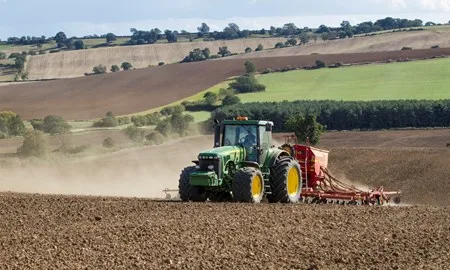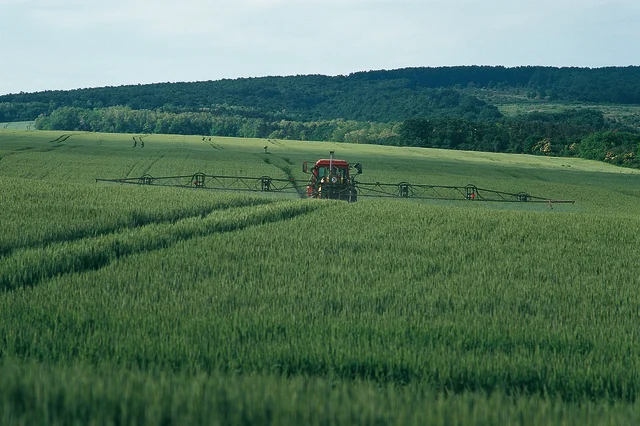Published on 2nd July 2021
Weed Management
How previous seasons’ weed control can inform your approach this autumn

Tom Chillcott, Cereal Herbicides Campaign Manager reflects on the weed pressure in cereal crops this year, what to focus on pre-drilling, and options for control that support good weed resistance management ahead of the new season.
The previous two autumns, 2019 and 2020, have been challenging for growers in the UK due to significant wet weather which not only hampered weed control, but in some cases prevented crops being drilled at all. In both years many crops did not receive a pre-emergence herbicide either at all, or not at the optimal time, resulting in crops going through the winter without any residual weed control. Come spring, this meant a mixed-bag of crops and significant grass-weed pressure.
But it wasn’t all bad news. Where growers had got crops in before the rain, and their pre- and post-emergence herbicides applied in time, crops were looking good and weeds well-controlled.
This is because autumn herbicide applications make a significant difference to weed control.
However, with growers wanting to avoid the problems of the previous two seasons when delayed drilling led to no drilling in a lot of cases, we are expecting to see crops drilled earlier. Delayed drilling is a highly effective management tool but comes with risks if the weather doesn’t play ball.
Early drilling risks
Crops drilled in September will go into warmer seedbeds that may have had fewer passes of glyphosate to remove initial flushes of black-grass. This means crops will face higher weed pressure, with a greater reliance on chemical control. In these situations, get the crop off to the best start with good seedbed preparation, and make the most of residual chemistry.
Timely applications are important. Early-drilled crops will benefit from a residual applied at true pre-emergence stage, ideally 48 hours after drilling, using good application technique with label-rate water volume and the right nozzle, boom height and forward speed to suit the product.
Choosing the right product is the final important step. When you’re looking for good autumn weed control, and especially if you’re drilling early, look for a residual with prolonged activity.
Herbicide choice can make a difference
All herbicide active substances are classified by Herbicides Resistance Action Committee (HRAC) into mode of action groups according to how they kill or damage a plant. In cereal crops the risk of herbicide resistance is higher, because of the biological similarities between the crop you want to protect and the weed you want to kill. By using multiple modes of action to kill a target weed, it is less likely that the weed will be able to overcome all of these processes, which reduces the risk of weed populations rapidly developing resistance.
Several herbicide actives have been withdrawn over the past few years, leaving a much smaller pool of actives and modes of action to choose from.
With the increasing threat of herbicide resistance, the choice of product and tank mix combinations need close attention. Using herbicides with actives from different mode of action groups is ideal from a herbicide resistance management perspective, and also helps to improve overall weed control.
Proclus contains aclonifen, a new mode of action for grass-weed and broad-leaved weed control in cereals. It’s also the only active substance in group 32, which gives growers an ideal opportunity to diversify tank mix combinations.
Aclonifen, diflufenican, and flufenacet belong to different HRAC groups. so when Proclus (aclonifen) is applied with Liberator (diflufenican + flufenacet) you get three modes of action that work to target different parts of the weed’s cell, leading to greater control and lessen the risk of resistance.
Another advantage of aclonifen is the persistency of control it offers, giving several weeks of activity after application.
Other grass-weed threats
Bayer scientists are working in conjunction with NIAB to conduct a UK wide rye-grass resistance survey. Feedback from growers and agronomists would indicate that rye-grass is becoming more prevalent as a cereal crop weed and becoming challenging to control. It is likely that there has been an increase in resistance, particularly to flufenacet. Read last year’s survey results.
This July we’re encouraging growers to send seed samples of Italian rye-grass to NIAB for testing. The results will help participating growers understand the resistance status of their rye-grass populations on farm, and help them with future weed management, as well as providing a snapshot of the problem across the UK.
Through our work with John Cussans at NIAB we’ve found that Proclus and Liberator are still performing well, even where strains of Italian rye-grass are less sensitive to flufenacet and indicating that these three modes of action are an effective combination even where resistance is present.



